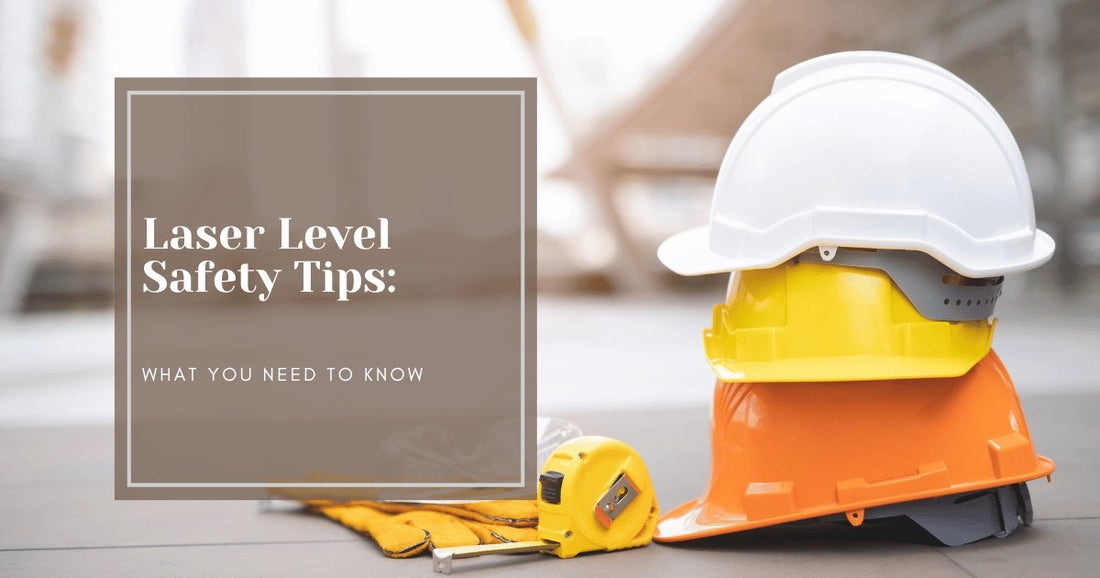Working with laser levels can be a piece of cake when you know what you're doing. However, as with any powerful tool, it's essential to put safety first. This guide is chock-full of laser level safety tips, so you can ensure you're not only accurate but also protecting yourself and others while on the job.
So, buckle up and let's dive into the nitty-gritty of laser level safety tips!
1. Know Your Laser Level Inside Out
Familiarize Yourself with the User Manual
Before you start playing around with your laser level, take a gander at the user manual. It's the Holy Grail for understanding how to operate your device safely and effectively. Here are a few pointers to keep in mind:
- Learn the different parts of your laser level
- Understand how to set up and calibrate the device
- Get a grip on how to troubleshoot any issues that may arise
Laser Classifications: Know What You're Dealing With
Laser levels come in different classes, which determine their potential hazards. The higher the class, the more hazardous the laser. Typically, laser levels used in construction settings are classified as Class 2 or Class 3R, which are relatively safe for brief, accidental exposure. However, it's still crucial to exercise caution when using them.
2. The ABCs of Laser Level Safety Gear
A. Laser Safety Goggles: Eyes on the Prize
Your peepers are precious, so don't skimp on eye protection. Laser safety goggles are designed to shield your eyes from the specific wavelength of the laser level you're using. Make sure to select goggles that are compatible with your device's class and wavelength.
B. High-Visibility Clothing: Stand Out for Safety
When working in construction zones, it's important to be seen. Wearing high-visibility clothing not only makes you visible to others but also helps you spot the laser beam more easily, reducing the risk of accidents.
C. Proper Footwear: A Firm Footing
A solid, non-slip pair of boots can save you from trips and falls, especially when working on uneven terrain or around cables. Invest in good-quality footwear for better safety and comfort on the job.
3. Setting Up Your Laser Level: A Safe Foundation
Choose the Right Spot
Selecting the right location to set up your laser level is crucial for both accuracy and safety. Keep these factors in mind:
- Avoid placing the device in high-traffic areas
- Ensure the surface is stable and level
- Keep the laser level away from flammable materials
Secure the Device
Whether you're using a tripod, wall mount, or another stabilizing method, ensure the laser level is securely fastened. A wobbly laser level not only leads to inaccurate measurements but can also pose a risk if it falls.
4. Operating Your Laser Level: Safety First
Warn Others of the Laser Zone
Before you switch on your laser level, inform your coworkers that you'll be using the device. Place warning signs around the work area to alert others and prevent accidental exposure to the laser beam.
Keep the Laser Beam Away from Eyes
Never point the laser beam directly at someone's eyes, and avoid looking into the beam yourself. Even a brief exposure to a Class 2 or 3R laser can cause discomfort or temporary vision impairment. In case of accidental exposure, look away immediately and consult a medical professional if necessary.
Use Laser Targets Responsibly
Laser targets help you see the beam more clearly, but they can also intensify the reflected light. Exercise caution when using targets, and avoid looking directly at the reflected beam.
Turn Off the Laser When Not in Use
Switch off the laser level when you're not using it to reduce the risk of accidental exposure. Besides, it's also an excellent way to conserve battery life!
5. Maintenance and Storage: Treat Your Laser Level with Care
Regularly Inspect Your Device
Perform routine checks on your laser level to ensure it's in tip-top condition. Look for any damage, loose parts, or signs of wear that could compromise the device's safety or accuracy.
Store Your Laser Level Properly
When you're done using your laser level, store it in its protective case to shield it from dust, moisture, and impact damage. Keep it in a cool, dry place away from direct sunlight and extreme temperatures.
FAQs
Q: What should I do if I accidentally look into a laser beam?
A: If you accidentally look into a laser beam, immediately turn away and close your eyes. Consult a medical professional if you experience discomfort, pain, or vision impairment after exposure.
Q: Can I use a laser level outdoors on a sunny day?
A: Yes, you can use a laser level outdoors on a sunny day, but you may need a laser detector to help you see the beam more clearly. Additionally, consider wearing high-visibility clothing to make it easier to spot the beam.
Q: Are laser levels dangerous for pets?
A: Just like with humans, direct exposure to a laser beam can harm pets' eyes. Keep your pets away from the work area when using a laser level, and never point the beam at their eyes.
Conclusion
Using a laser level safely and effectively is a piece of cake when you're armed with the right knowledge. By following these laser level safety tips, you'll not only protect yourself and others but also ensure that your work is accurate and efficient. Remember, safety should always be your top priority when working with any tool. Happy leveling!

